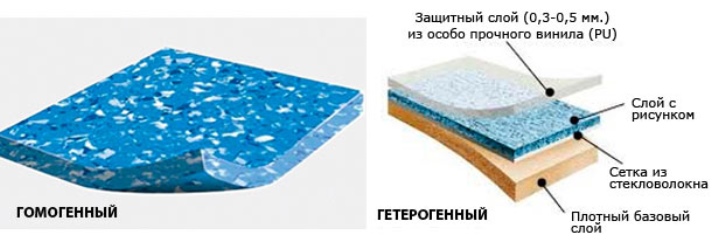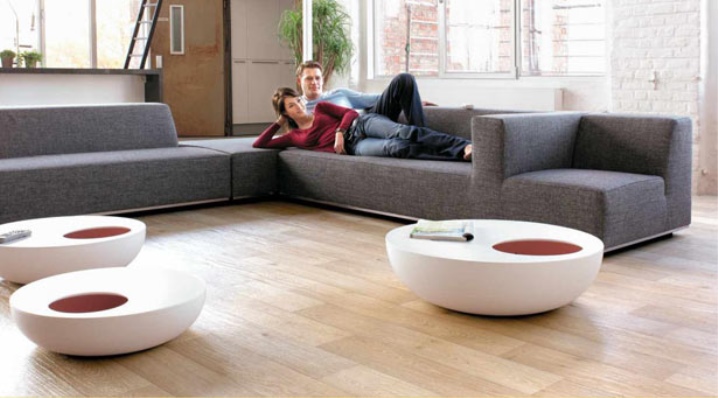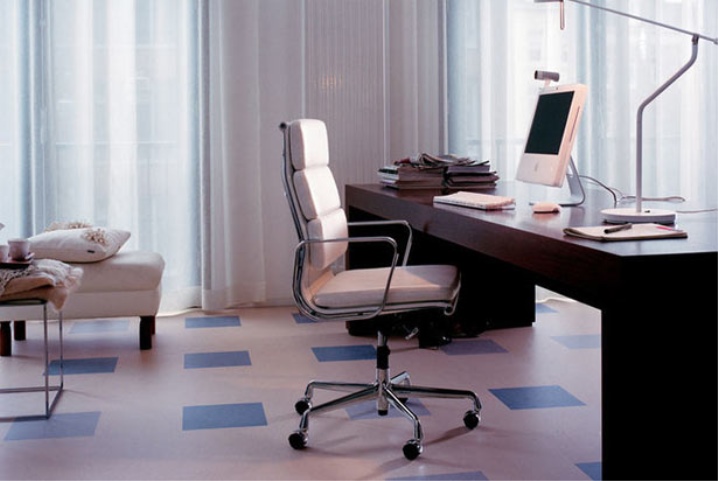Homogeneous and heterogeneous linoleums - which one to choose

Often, when choosing linoleum, you can find a mention of heterogeneous and homogeneous types of this coating. But what this means is not clear to everyone. And, most importantly, how does this affect the quality characteristics of the coating itself? Let's consider both types to understand which one is better to choose.
Homogeneous
The prefix "homo-" already speaks for itself, meaning equal, homogeneous. It is a chemically homogeneous coating (PVC), consisting of only one layer.
Such linoleum is very durable and elastic. The color palette is quite extensive, but the patterns are monotonous: marble, specks, pure shade. Therefore, it is often laid in rooms with high traffic. Even if in some places the coating is more worn out, the pattern will remain unchanged.
Homogeneous linoleum distinguishes between a directional pattern (along the entire canvas) and a chaotic one. The latter is less easily soiled.
Heterogeneous
This coating has several layers (4-6):
- protective covering;
- decorative layer;
- canvas layer (foamed PVC);
- support layer (fiberglass, but may be absent);
- substrate (back layer).

Moreover, each of them performs its functions in this "pie". Sometimes a 6th layer is added for special purpose linoleum (anti-slip, anti-static, etc.). But this layer may be absent, and a special component is contained in some other. For example, for anti-slip linoleum, it is added to the top, protective layer.
Let's take a closer look at each of them:
WITHThe lowest layer of heterogeneous linoleum - the substrate - is foamed PVC.
Foam can be:
- mechanical,
- chemical.
It is she who is mainly responsible for the sound insulation of the coating. Mechanical foam has a communicating cell structure (like a sponge), while chemical foam has a closed one. Therefore, chemical foam absorbs water better, is more durable, comfortable when walking, the coating straightens the resulting dents within 5 hours.
Felt or jute are also used along with foamed PVC.
The next layer - support - consisting of fiberglass. This is a kind of skeleton of the entire coating, to which all other layers are attached. But in some heterogeneous linoleums, fiberglass may be absent.
Canvas is another layer of foamed PVC. Subsequently, a decorative coating is applied to it. Passing through the oven, this layer foams at the same time as the back layer, giving the linoleum sound and heat insulation properties.

The decorative layer is applied with special cylinders. Unlike the homogeneous type, the heterogeneous one can have a different graphic pattern. It can be all kinds of geometric patterns, imitations of other floor coverings, such as parquet or stone. And thanks to the ability to add special substances (inhibitors) to PVC, you can create volumetric patterns.
And the last, top layer is a protective coating. It is a transparent layer of pure PVC. It is he who protects the coating from abrasion, having high wear resistance. Its thickness directly affects the durability of linoleum.
In more expensive, commercial linoleums, manufacturers apply another protective layer of polyacrylic or polyurethane over the PVC. This porous coating comparatively increases the wear resistance of the protective layer, does not require special processing after laying the linoleum, and is easy to clean. Sometimes the polyurethane layer is additionally treated with ultraviolet light, making the protective coating more durable.
Laying linoleum is quite simple, even a beginner can handle it.

Choice
It is difficult to say which linoleum is better. Their wear resistance is about the same.
Heterogeneous linoleum is more durable, has noise and heat insulation, is more comfortable when walking, and a huge selection of decorative patterns allows you to choose a floor covering for any interior style.
But homogeneous linoleum is more elastic, allowing you to bend the edges around the perimeter of the room, making the floor more protected from moisture and bacteria. It is also recommended to lay it in rooms with a high risk of mechanical damage (falling sharp and heavy objects).
Sometimes the width of the room also plays an important role. Rolls of heterogeneous linoleum are wider (1.5-4 m), while homogeneous linoleum is only 1.5-2 m. This can be a decisive factor when buying if you plan to lay linoleum without joints.













The comment was sent successfully.